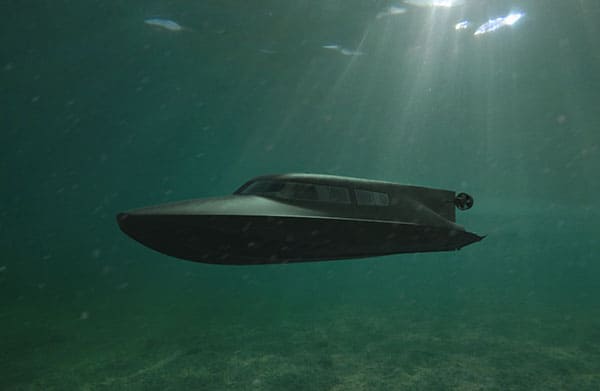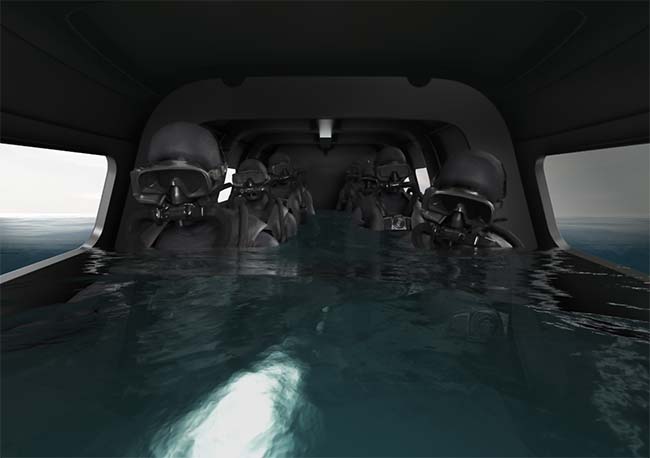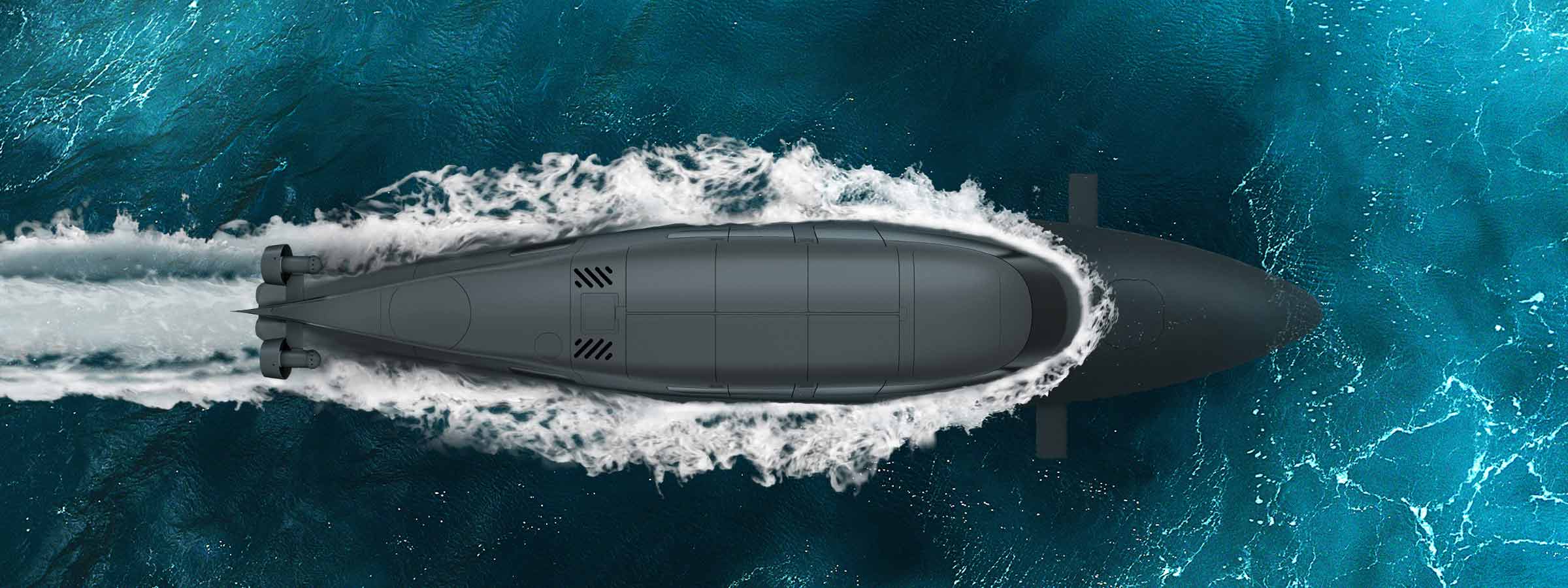Combining cutting-edge hull design, composite material construction and an advanced control system, the company’s VICTA class DDU offers the speed and endurance of a long-range insertion craft (LRIC) with the stealth and capacity of a swimmer delivery vehicle (SDV). The team behind it has extensive operational experience and the result is a first-of-kind, fly-by-wire craft that can rapidly transition from surface to sub-surface configuration.
VICTA can travel up to 250 nautical miles (nm) at speeds of up to 40 knots on the surface, to swiftly deliver up to eight operatives (two crew and six divers) to their objective area mission-ready. Below the surface, it cruises at 6 knots, with a ‘sprint’ capability of 8 knots, for up to 25 nm.
It’s also easy to transport and deploy into a theatre of operation. At just under 12 m long, it fits comfortably into a standard shipping container and can be deployed from an unmodified surface vessel or port of opportunity. It can even be carried underslung from a heavy-lift support helicopter, such as the CH-47 Chinook.
Going in forewarned
But, it’s when VICTA is on and beneath the surface that Vigilant plays its enabling role. Being able to detect – at range – navigation hazards, before they become a real threat, is mission-critical to the sort of operations likely to feature in VICTA’s play-book. Vigilant is the solution.
With Vigilant integrated into VICTA, complete with its easy to use, intuitive graphic user interface, pilots can visualise the environment ahead to navigate safely and avoid obstacles ensuring safe insertion and recovery of operators, regardless of the mission. Quite simply, it provides a tactical advantage for their operations.
Using sophisticated bow-mounted transducers, Vigilant displays water depth, sub-surface obstacles and features by creating an accurate 3D model of the underwater environment over a 90° field of view. The model is displayed relative to the vessel, overlaid on standard charts in real-time, providing operators with an easily-interpreted topographical image of their navigation track. It may also enable intruder detection, potentially vital in high-risk, high-threat environments.

Unique visualisation
“Vigilant allows us safe and unhindered surface/sub-surface manoeuvring,” says Tim Chicken, SubSea Craft’s Chief Commercial Officer. “Vigilant was selected because of a proven track-record and a compatibility with our proposed concept of operations allowing VICTA to operate safely in confined water-space owing to its unique 2D and 3D visualisation capability.”
For example, pilots can use 2D, for obstacle avoidance, and 3D, for a real-time, three-dimensional view of the world around them, allowing navigation within potentially hazardous coastal – or what are known as littoral – zones where hidden threats, manmade or natural, may be lurking.
Combing all of these unique capabilities, VICTA broadens the options open to maritime, joint and special forces commanders, providing an advantage previously not available with conventional craft. It’s a powerful capability able to support operational requirements ranging from advanced-force insertion through to maritime counter-terrorism and constabulary operations. In all of these scenarios, situational awareness is key.

Unrivalled performance
“One of Vigilant’s main advantages, over competing products, is its range,” says Ioseba Tena, our Global Business Manager for Robotics and Defence. “It can see out to 1,500 m, when in working in 2D mode, and then to 600 m in 3D mode, to help you plot your environment in real time ahead of the vehicle. That type of performance is unrivalled.”
SubSea Craft worked in close partnership with a number of other cutting-edge marine technology and engineering businesses, including Ben Ainslie Racing Technologies (BAR-Tech) and control systems specialist SCISYS. It was built by AC Marine and Composites Ltd. in Gosport. Why not head across to our YouTube channel to hear Subsea Craft’s Bill Barfoot talking about Vigilant and VICTA’s capabilities at DSEI London, in September 2019, where the craft was first revealed.
Find out more from SubSea Craft: www.subseacraft.com
VICTA in numbers
- Length – 11.95 m
- Beam – 2.3 m
- Draught – 0.06 m
- Crew – 2
- Divers – 6
- Fully loaded displacement – 9,315 Kg
- Surface speed – 30/40 kts (cruising speed and top speed)
- Endurance – 250 nm (expandable)
- Dive depth – 30 m
- Subsurface speed – 6/8 kts (cruising and sprint)
- Subsurface range – 25 nm
